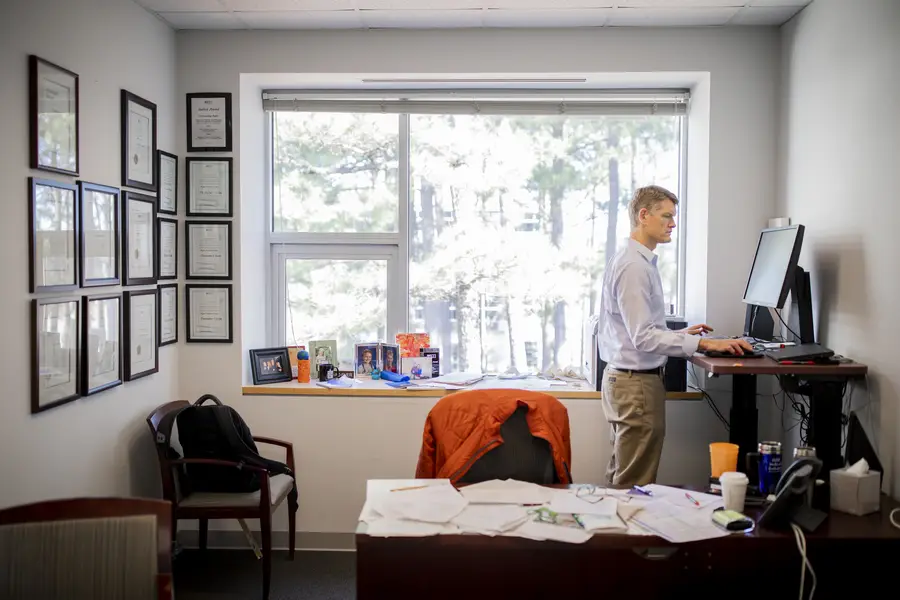Shining a Spotlight on Campus Sexual Assault
Research by Chris Krebs Prompts Campuses to Improve Prevention Policies and Practices
Research by Chris Krebs Prompts Campuses to Improve Prevention Policies and Practices

Christopher Krebs has always been fascinated by criminology and what motivates some people to engage in deviant behavior, but his research specialty was cemented while teaching an undergraduate university class.
During a single semester, Krebs had three undergraduates from his criminology class tell him that they were drugged without their knowledge or consent.
“None of them were sexually assaulted, but it was a really scary experience for these students,” said Krebs, Chief Scientist at RTI. “One woke up in the emergency room, and her parents were there from out of state. I started to get interested in studying drug-facilitated sexual assault and how common it was.”
Not finding any substantial research data on the topic, he wrote a proposal and received a grant from the National Institute of Justice to study sexual assault at two large universities.
Krebs’ research found that rates of sexual assault are very high at some colleges.
Krebs was contacted while on a family vacation by White House staff members asking about the data from the two universities as part of their work on the White House Task Force to Protect Students From Sexual Assault.
The task force, which was formed in 2014, encouraged colleges and universities to conduct surveys to collect school-level data on the prevalence and nature of sexual victimization and related measures of campus climate, including students’ knowledge of reporting policies and resources, attitudes about trainings and prevention, and perceptions of the community’s response to the problem.
The task force publicized the research from the two universities, and Krebs and his team were asked by the U.S. Department of Justice’s Bureau of Justice Statistics to conduct a much larger study on sexual assault on college campuses.
In 2015, RTI – led by Krebs and RTI’s Christine Lindquist – fielded a survey of 23,000 students at nine schools. The results of the Campus Climate Survey Validation Study were no less astounding than the smaller study.
“The average was at least one in five students being sexually assaulted, if not a little higher,” Krebs said.
Moreover, the study found that only 12.5 percent of rapes and 4.3 percent of sexual battery incidents were reported by the victim to any official.
The study results generated national attention around the issue, and Krebs and his team briefed the U.S. House and Senate on the findings.

In 2015, RTI – led by Krebs and RTI’s Christine Lindquist – fielded a survey of 23,000 students at nine schools.
The results of the Campus Climate Survey Validation Study were no less astounding than the smaller study.
“The average was at least one in five students being sexually assaulted, if not a little higher,” Krebs said.
Moreover, the study found that only 12.5 percent of rapes and 4.3 percent of sexual battery incidents were reported by the victim to any official.
The study results generated national attention around the issue, and Krebs and his team briefed the U.S. House and Senate on the findings.
In the spring of 2018, two of the schools from the earlier survey tasked RTI with repeating the research to gauge if there had been improvement in the number of sexual assaults on campus.
Unfortunately, the follow-up study did not find that the number of undergraduates being sexually assaulted had declined. One of the schools in the original survey had very high rates of sexual assault and sexual harassment – 20 percent of their undergraduate population reported being sexually assaulted, with a third of those being rapes.
Krebs noted, “that the school is taking this issue very seriously, acknowledging that they still have a problem with sexual misconduct, and using the data we collected from their students to make improvements to their policies and practices.”
That study also included numerous questions to measure the culture on college campuses around sexual assault and students’ attitudes towards women.
One school has launched a bystander intervention program to teach students how to intervene when they think something inappropriate is happening or about to happen.
We are seeing that these types of intervention behaviors are increasing, and the survey data we collected showed the school that they are getting a return on their investment in these programs,” Krebs added. “At another school, a lot more victims are seeking services or telling people at the university about what happened. The school went from having one or two full-time counselors to meet with survivors to having 11, and they changed their staffing based on our research data, and more survivors are now being helped.
But despite these positive efforts on college campuses where leaders are aware of the prevalence of sexual assault, those represent only a fraction of all the colleges and universities in the country.
“There are thousands of universities who are seemingly unwilling to acknowledge this is a problem or do anything to practically address it,” Krebs said. “Those schools are flying blind, so to speak. It is great when we can work with schools, do methodologically-rigorous research, and give them valid, insightful information – as sobering as it may be – to give to schools, opening their eyes to the nature and magnitude of the problem.”
For Krebs, uncovering the truth about the scale of campus assaults fuels his passion for his work.
“We really believe this work represents improving the human condition,” he added. “We are talking about thousands and thousands of survivors each year who don’t tell anyone - that is who we are trying to give a voice to and learn from when we are collecting these data.”